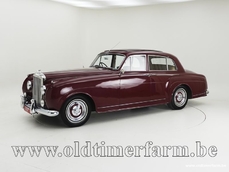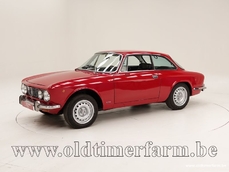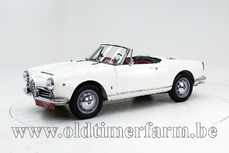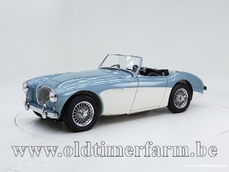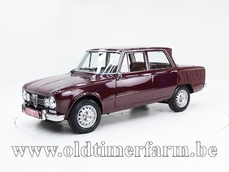Pierce-Arrow 1245 1935
General description :
❗Lowered price from €59.950 - €49.950❗ Gorgeous color combination of a burgundy body and a beige interior. Art Deco styling. The interior was custom made for every client. In this case the driver’s seat is in leather and the rest of the upholstery is in fabric. Only 875 cars produced in 1935. Beautiful exterior paint and ready to be driven. Historical file with manual and original plate. Pierce-Arrow Motor Car Company was an American automobile manufacturer based in Buffalo, New York, which was active from 1901 to 1938. Although best known for its expensive luxury cars, Pierce-Arrow also manufactured commercial trucks, fire trucks, camp trailers, motorcycles, and bicycles. The Pierce-Arrow was a status symbol, owned by many Hollywood stars and tycoons. Most of the royalty of the world had at least one Pierce-Arrow in its collection. Some have described Pierce and two of its rivals among American luxury cars, Peerless and Packard, as the "Three P's of Motordom. In 1928, the Studebaker Corporation of South Bend, Indiana, gained control of the Buffalo firm. The association was to last for five years, with moderate benefits to both companies' engineering departments, which continued to function as separate entities. Pierce-Arrow also gained a dealer network, as the cars were sold through Studebaker dealerships. Under Studebaker ownership Pierce-Arrow retired the venerable 6-cylinder engine and in 1929 introduced an L-head [straight-eight engine], which displaced 366 cubic inches. In 1933, Pierce-Arrow unveiled the radically streamlined Silver Arrow in a final attempt to appeal to the wealthy at the New York Auto Show. The car was well received by the public and the motoring press, being announced with the slogan "Suddenly it's 1940!" Pierce sold five examples but, since it was priced at $10,000 during the worst of the Depression, the rich were hesitant to spend so much. The bodies were built at Studebaker, which subsequently assisted in rolling out a lower-priced production model. This, however, lacked many luxury features of the show car and still failed to generate enough sales. Specifications Wheelbase : 353 cm (139 in) Weight : 2314 kg (5102 lb) Engine : V12 7566 cc (462 ci), front-mounted 24 valves 2 Stromberg carburettors 3-speed manual gearbox Maximum power : 175 bhp at 3400 rpm This is what we have on file: Operation and care booklet Engineering data booklet Put on display in 1970 by Otto Clausmeyer Indiana Last registered in the USA In Indiana under 724 249 Maintenance record of 1991 Maintenance record 2018 Owned by Otto Clausmeyer Indiana 1970 The car then went to an American collector Mr Browning in 1989, who’s parts collection was sold by Christies in 2000 Paperwork to support this in the file Then it was sold top Greece where it was not registered and kept in an important car collection The whole collection was sold to Italy where the current owner bought it Last registration: Italian (EU)
http://www.oldtimerfarm.be/en/collection-cars-for-sale/5418/pierce-arrow-1245-sedan-v12-35.php
1935 Pierce-Arrow 1245 is listed sold on ClassicDigest in Aalter by Oldtimerfarm Dealer for €49950.
Car Facts
Car type : Car Make : Pierce-Arrow Model : 1245 Engine size : 0.0 Model Year : 1935 Sub type : Sedan Color : Red Color type : Nonmetallic Location : Aalter
Sold
Seller Information
Sold
Other cars listed for sale by this dealer
About Pierce-Arrow
Pierce-Arrow, once considered among America's most prestigious and luxurious automobile manufacturers, contributed significantly to automotive history with its innovation, craftsmanship, and distinctive design elements. Here's an overview of Pierce-Arrow, its history, notable models, and the renowned headlights:Pierce-Arrow: An American Icon
Early Beginnings and Foundation:
Origins: Established in 1865 as a manufacturer of household goods and later bicycles, Pierce-Arrow transitioned to automobiles in the early 20th century.
Automobile Production: Officially entered the automotive market in 1901, producing high-quality cars that targeted affluent buyers.
Milestones and Remarkable Models:
Pierce-Arrow Model 66 (1910-1918):
Powerhouse: Known for its powerful 12.7-liter six-cylinder engine, showcasing impressive performance for its time.
Luxury and Innovation: Set a standard for luxury, featuring advanced engineering and opulent amenities.
Pierce-Arrow Silver Arrow (1933):
Streamlined Design: Celebrated for its sleek, futuristic design with smooth, aerodynamic lines.
Limited Production: Only five examples were produced, making it one of the most sought-after and valuable cars in automotive history.
Iconic Headlights:
Signature Headlights: Pierce-Arrow's most distinctive feature was its trademark headlights, known as "Pierce-Arrow Headlights" or "Pierce-Arrow Headlamps."
Fender-Mounted Headlights: These headlights were mounted on the fenders rather than the traditional placement on the car's body or grille, contributing to the brand's recognizable design language.
Legacy and Influence:
Luxury and Elegance: Pierce-Arrow earned a reputation for producing some of the finest luxury cars in America, appealing to affluent buyers seeking quality and prestige.
Contributions to Automotive Design: The brand's innovative design elements, such as the fender-mounted headlights, left a lasting impact on automotive styling and aesthetics.
Decline and End:
Challenges and Transition: Economic downturns and changes in consumer preferences led to Pierce-Arrow's decline.
Final Years: The company faced financial struggles during the Great Depression and ceased automobile production in 1938.
Conclusion
Pierce-Arrow's legacy lies in its commitment to producing meticulously crafted, luxurious automobiles that exuded elegance and sophistication. Alongside its opulent vehicles, the brand's distinctive fender-mounted headlights became an enduring symbol of its unique design approach, contributing to its iconic status in automotive history despite its eventual disappearance.
















